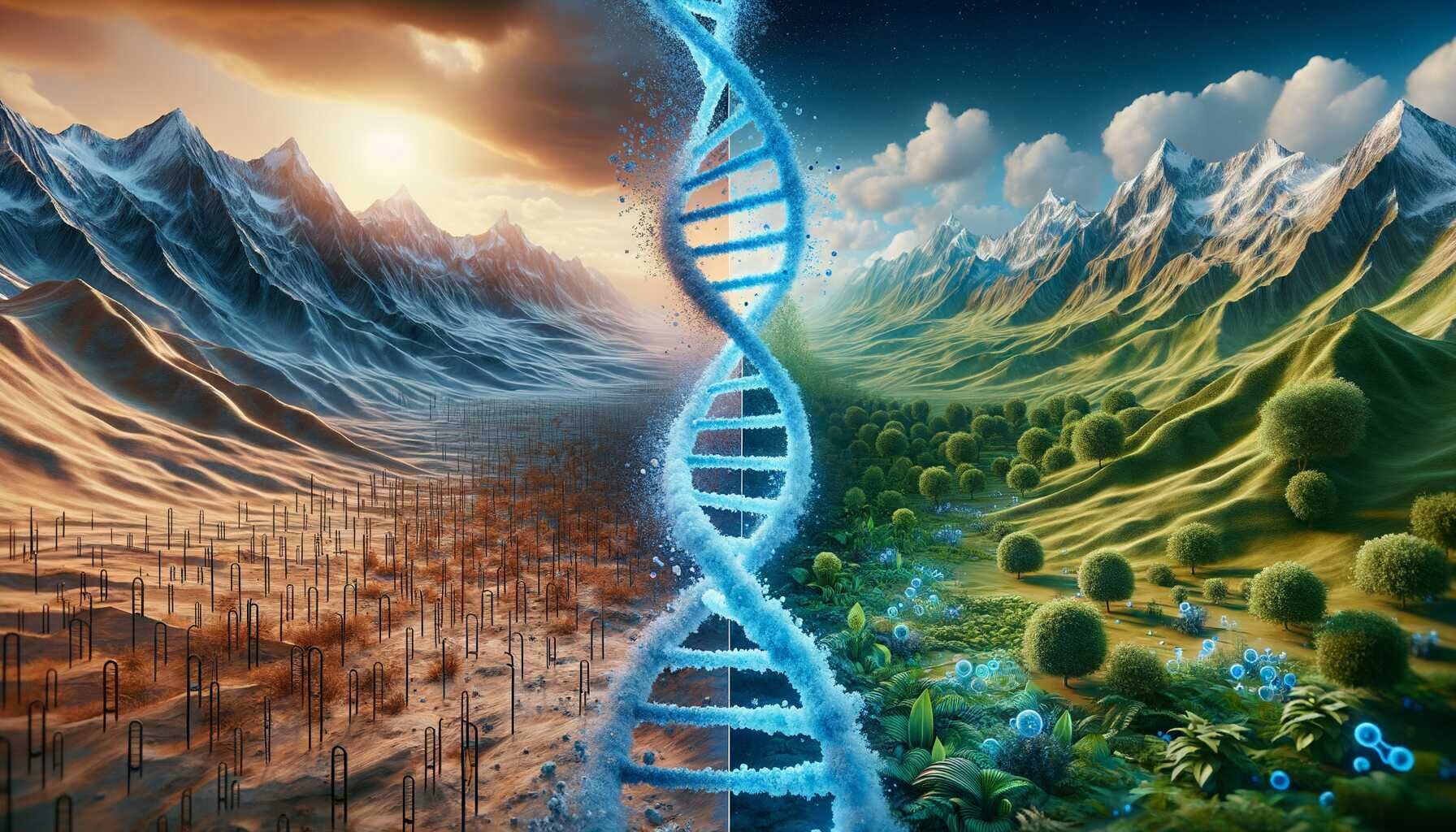
How Environment Shapes Genes: Impact and Insights
Have you ever wondered how the environment around you could be shaping your very genes? It sounds like a concept straight out of science fiction, but it’s a very real scientific principle. The term “environmental modification of gene expression” may seem daunting, but at its core, it’s about how our surroundings—from the air we breathe to the food we eat—can affect the way our genes work. It’s a fascinating dance between nature and nurture, playing out in our DNA.
Why is this important? Understanding how the environment influences our genes could revolutionize medicine, agriculture, and even our approach to everyday living. It’s a topic with implications that stretch from the microscopic level inside our cells to the global challenges we face as a society. In this journey of discovery, we’ll explore the early inklings of this idea, the milestones in research that brought us to our current understanding, and the modern developments that are shaping our future.
Are you ready to unlock the secrets of how our environment talks to our genes? Let’s peel back the layers of this scientific marvel and reveal the intricate connections that make us who we are. This isn’t just a story about biology; it’s about the essence of life itself.
Unlocking the Secrets of Our Genes: The Environment’s Role
The Environment’s Influence on Genetics
Every day, our bodies tell a story that is written in the language of our genes. But did you know that the environment around us can be a powerful editor? The concept of environmental modification of gene expression reveals how our surroundings can alter the way our genetic code is read and acted upon, leading to changes in our health, behavior, and well-being. This fascinating interplay between nature and nurture is more than just a scientific curiosity—it’s a critical piece of understanding ourselves and the world we live in.
Early Discovery of Environmental Impact on Genes
Long before we knew about DNA and genes, ancient civilizations observed that environmental factors like diet, climate, and lifestyle could influence a person’s health and traits. But it wasn’t until the 20th century that scientists began to understand how these factors could affect our genetic material directly.
In the 1940s, Conrad Waddington, a British developmental biologist, coined the term “epigenetics” to describe the interactions between genes and their environment that bring the phenotype—the set of observable characteristics—into being. Waddington’s experiments with fruit flies demonstrated that environmental pressures could induce genetic changes, a groundbreaking concept at the time.
Another critical milestone was the Dutch Hunger Winter of 1944-1945, a tragic natural experiment that provided insights into how severe famine could affect the health of unborn children. Researchers later found that these children had increased rates of health problems, suggesting that the environment had left a lasting impact on gene expression.
These early discoveries set the stage for a new understanding of genetics, one that acknowledged the environment’s role not just in shaping behavior and phenotypes, but in actively modifying the expression of our genes.
Research Milestones in environmental modification of gene expression
Our journey to understanding how the environment can influence gene expression has been both fascinating and complex. Let’s take a stroll down memory lane to see how scientists have unraveled the secrets of epigenetics, shedding light on how our surroundings can shape our genetic destiny.
The Birth of Epigenetics
While the term “epigenetics” was first coined in the 1940s by Conrad Waddington, it wasn’t until the 1970s and 1980s that researchers began to understand the mechanisms that could alter gene expression without changing the DNA sequence itself. This nascent field explored how environmental factors could switch genes on or off, leading to different outcomes in organisms.
DNA methylation: A Game-Changer
In the late 1970s, the discovery of DNA methylation marked a significant milestone. Scientists found that adding methyl groups to DNA could silence genes, and this process was influenced by environmental factors such as diet and stress. It opened a new realm of possibilities for understanding diseases and development.
Unraveling histone modification
The 1990s saw breakthroughs in histone modification research. Histones, the proteins around which DNA is wrapped, can be modified to either relax or compact DNA. This, in turn, regulates gene accessibility and expression. Studies revealed that these modifications also responded to environmental cues, offering further insights into the dynamic regulation of genes.
non-coding RNAs Enter the Scene
Entering the 21st century, the role of non-coding RNAs became more apparent. These RNA molecules, which do not code for proteins, were found to be instrumental in regulating gene expression in response to environmental factors. The discovery of microRNAs and their function in gene silencing was particularly groundbreaking.
Technological Advancements Propel Research
Advancements in technology, such as next-generation sequencing, have allowed scientists to study epigenetic changes across the entire genome. This has led to the identification of epigenomic patterns associated with various diseases, lifestyle factors, and even psychosocial experiences.
Epigenome-Wide Association Studies (EWAS)
Building on the foundation of genome-wide association studies (GWAS), researchers launched EWAS in the 2010s to investigate the relationship between epigenetic changes and disease. By correlating methylation patterns with disease states, scientists started to understand how environmental exposures could influence disease risk and progression.
The Ongoing Quest for Understanding
Today, the field of epigenetics continues to evolve, with scientists exploring the intergenerational effects of environmental exposures on gene expression. The burgeoning field of epitranscriptomics, studying modifications on RNA molecules, is also providing new avenues for research, revealing another layer of complexity in gene regulation.
As we continue to build on these milestones, our understanding of how the environment can leave lasting marks on our genes is becoming clearer. This knowledge holds the key to unlocking new ways to prevent and treat diseases, ultimately improving human health.
